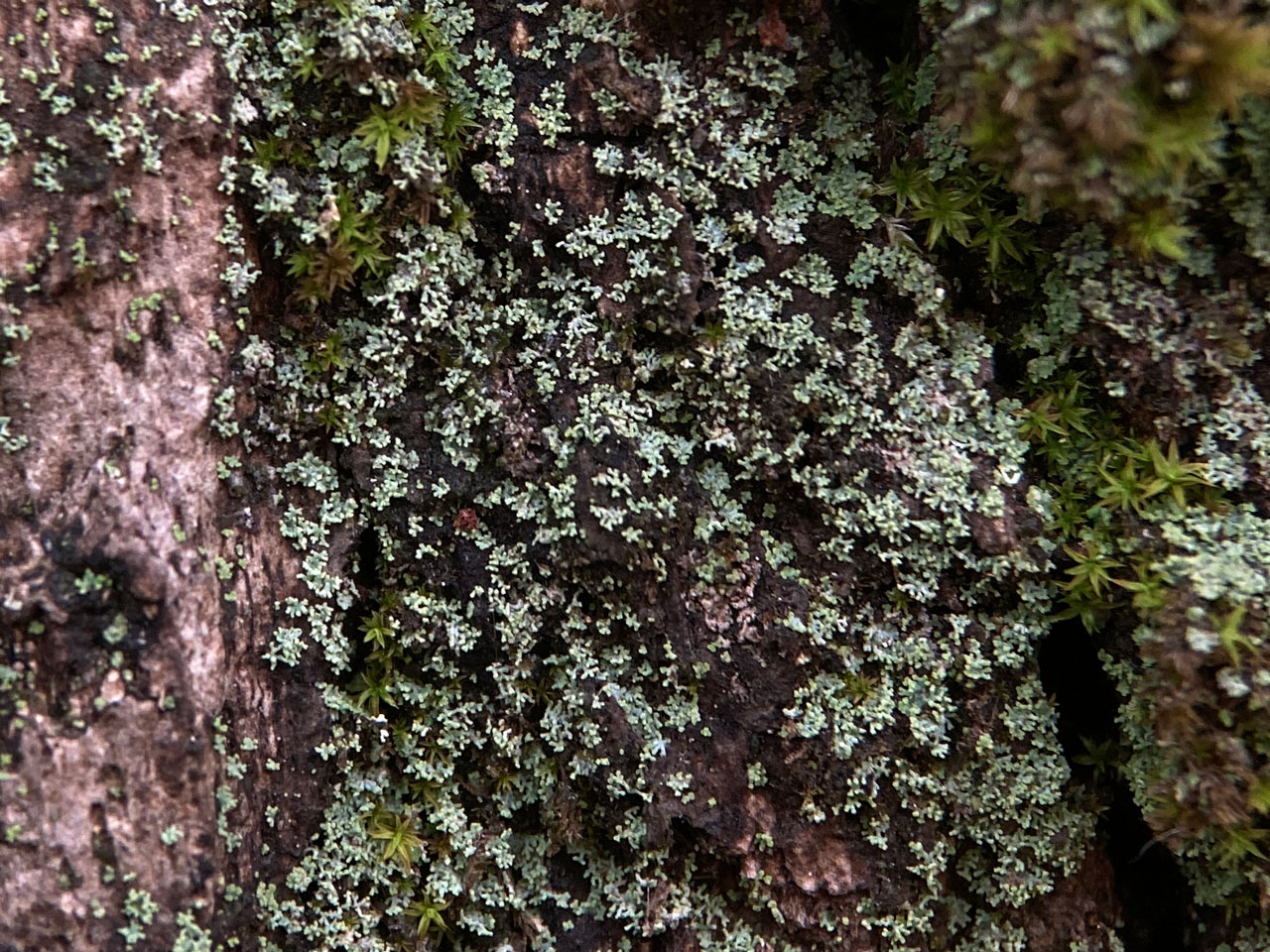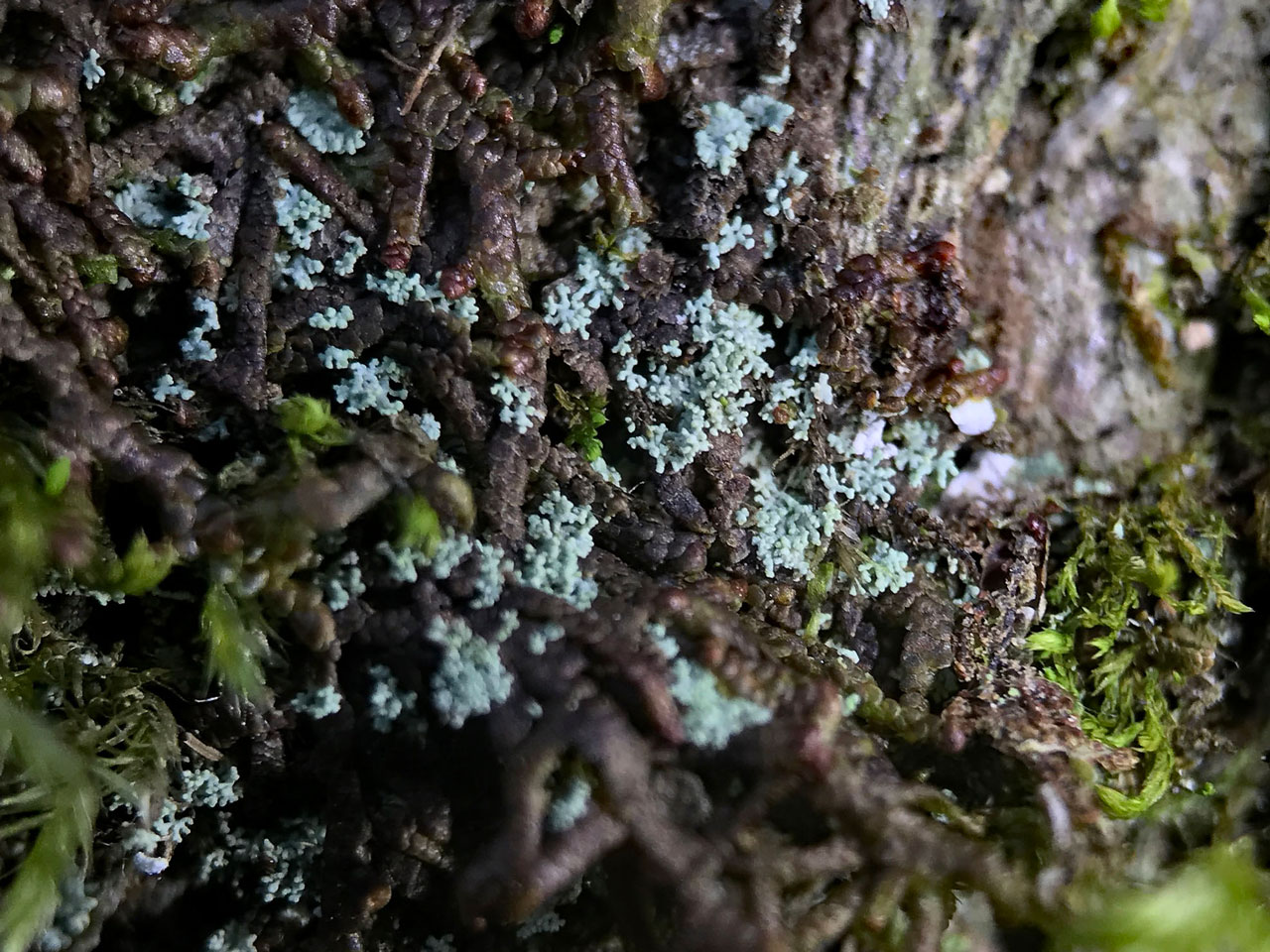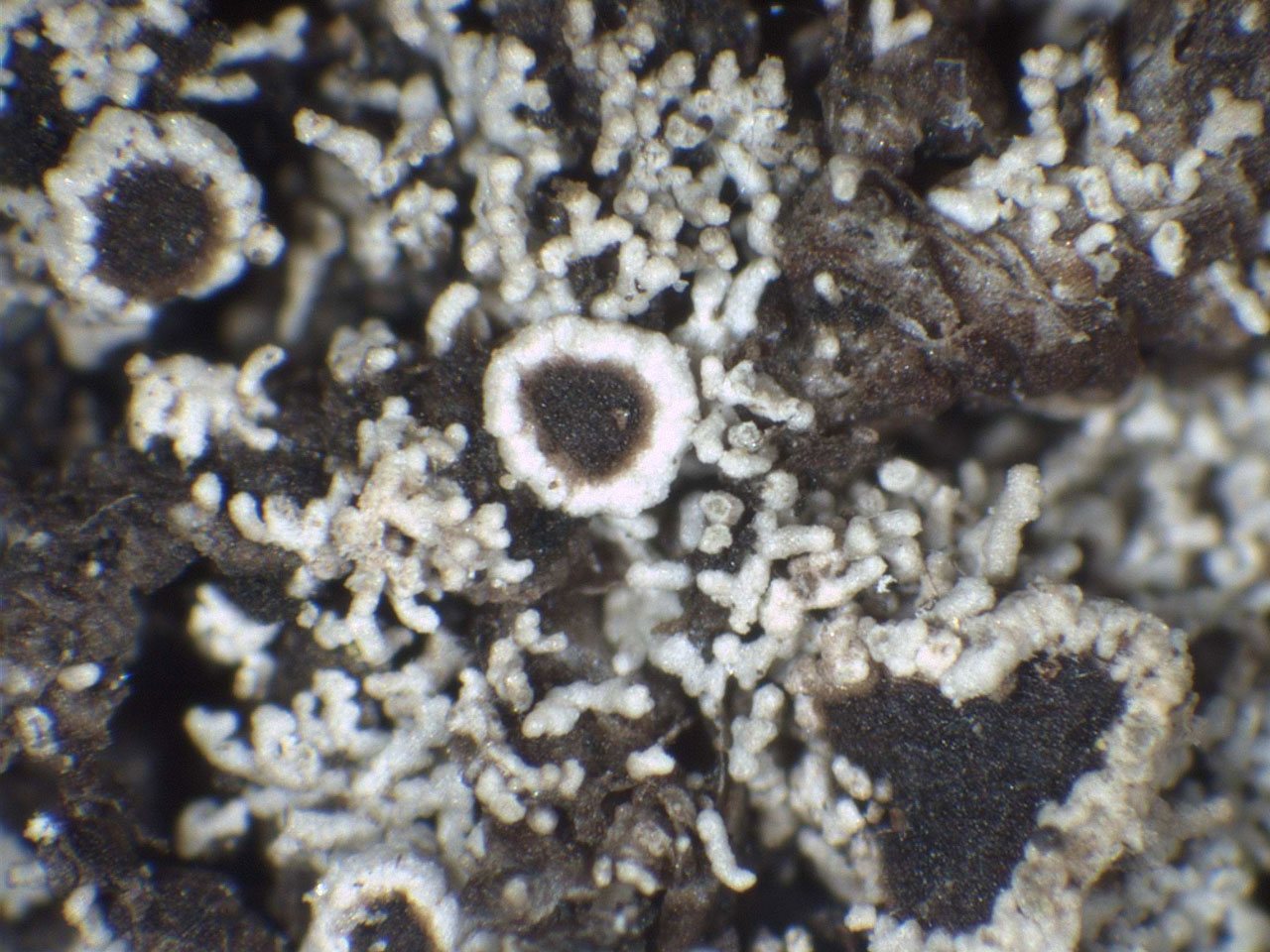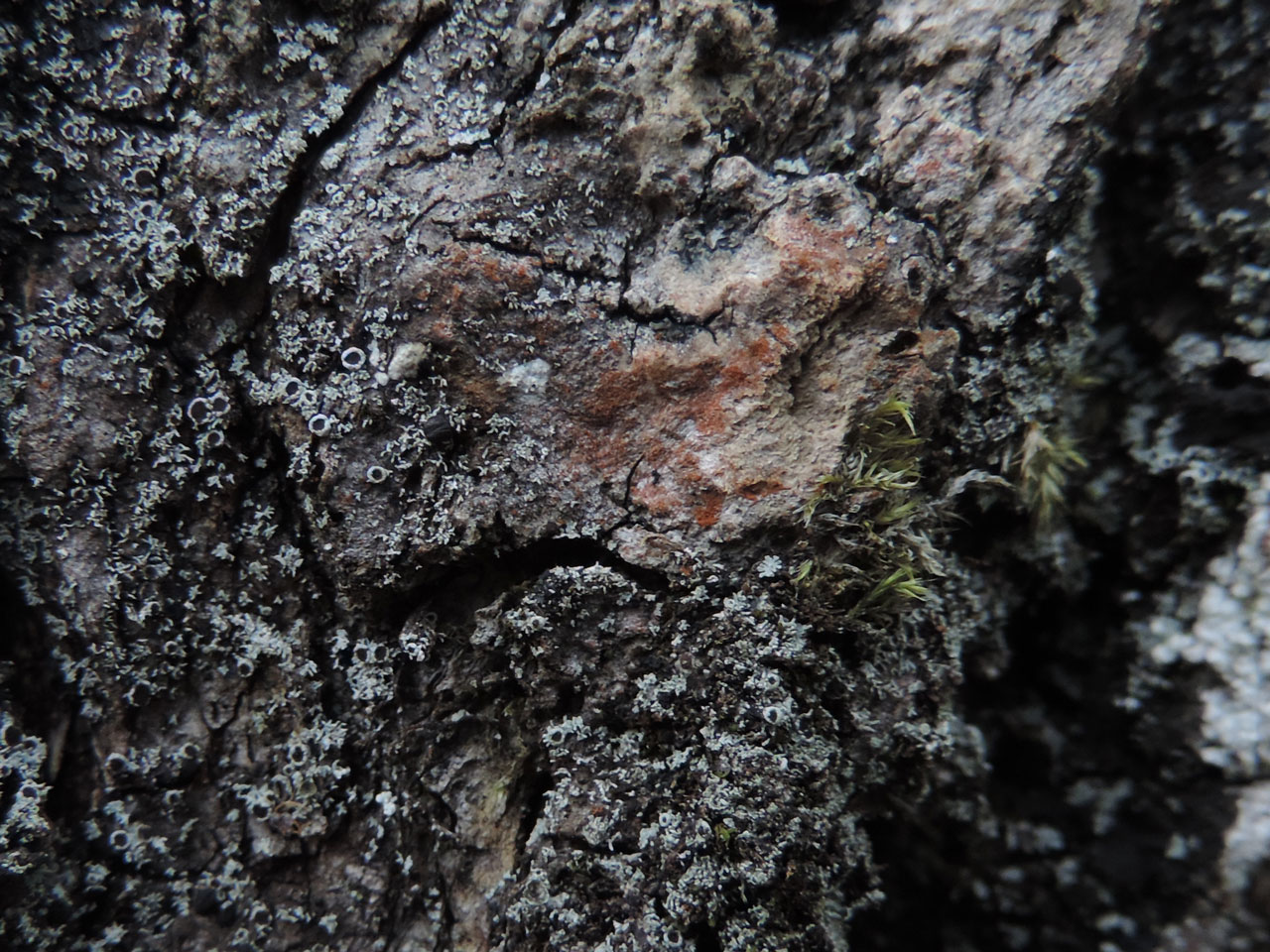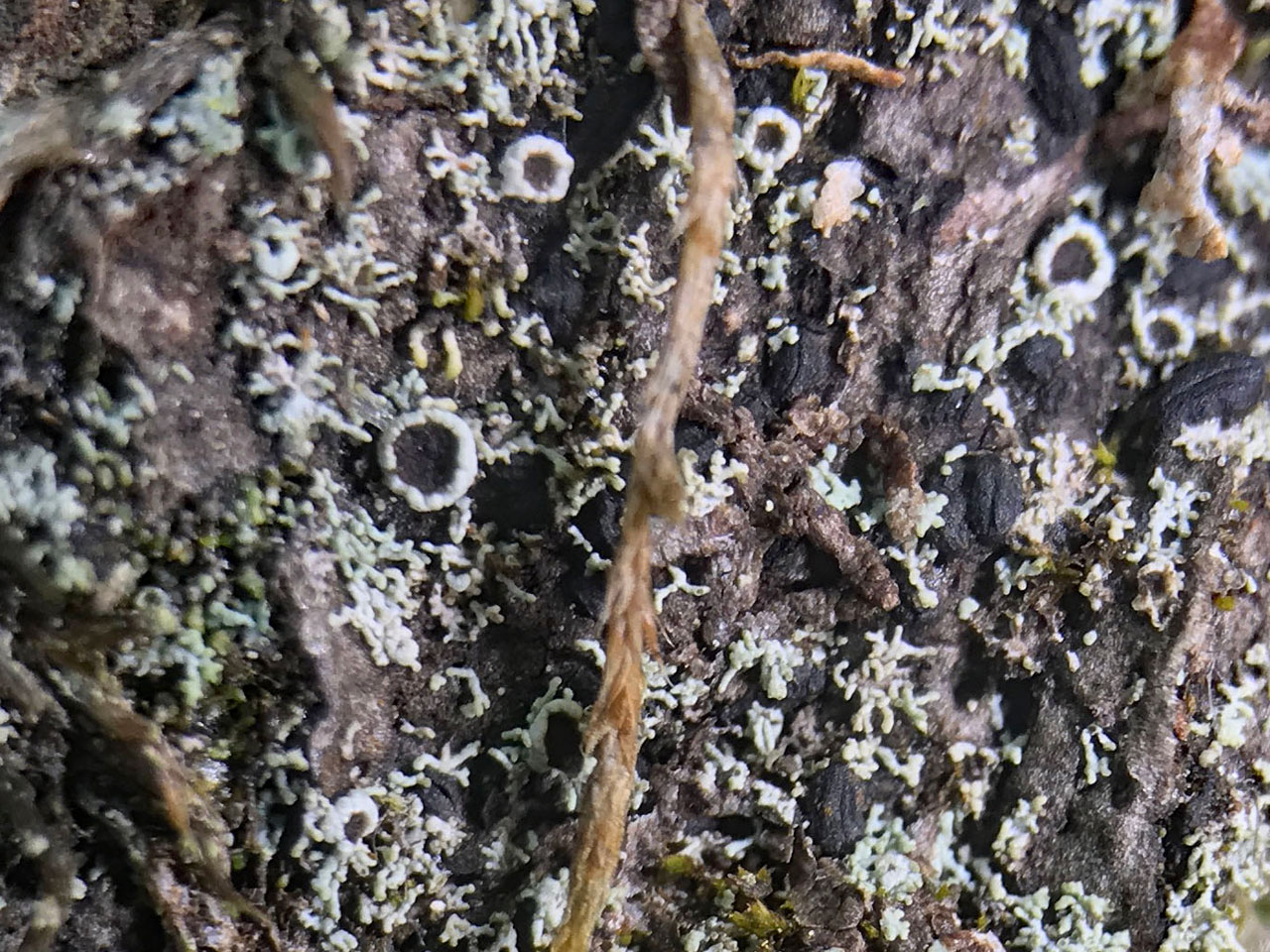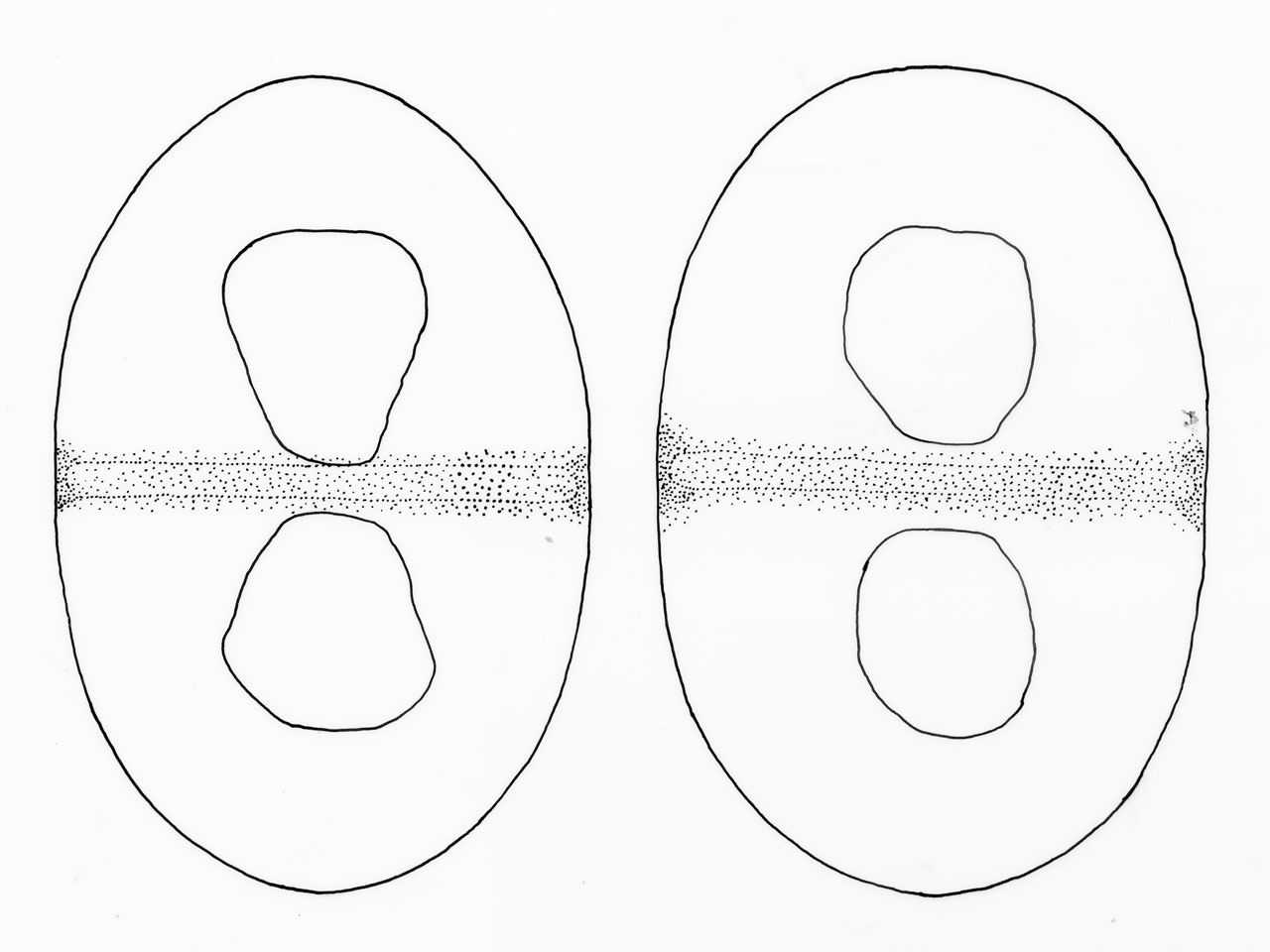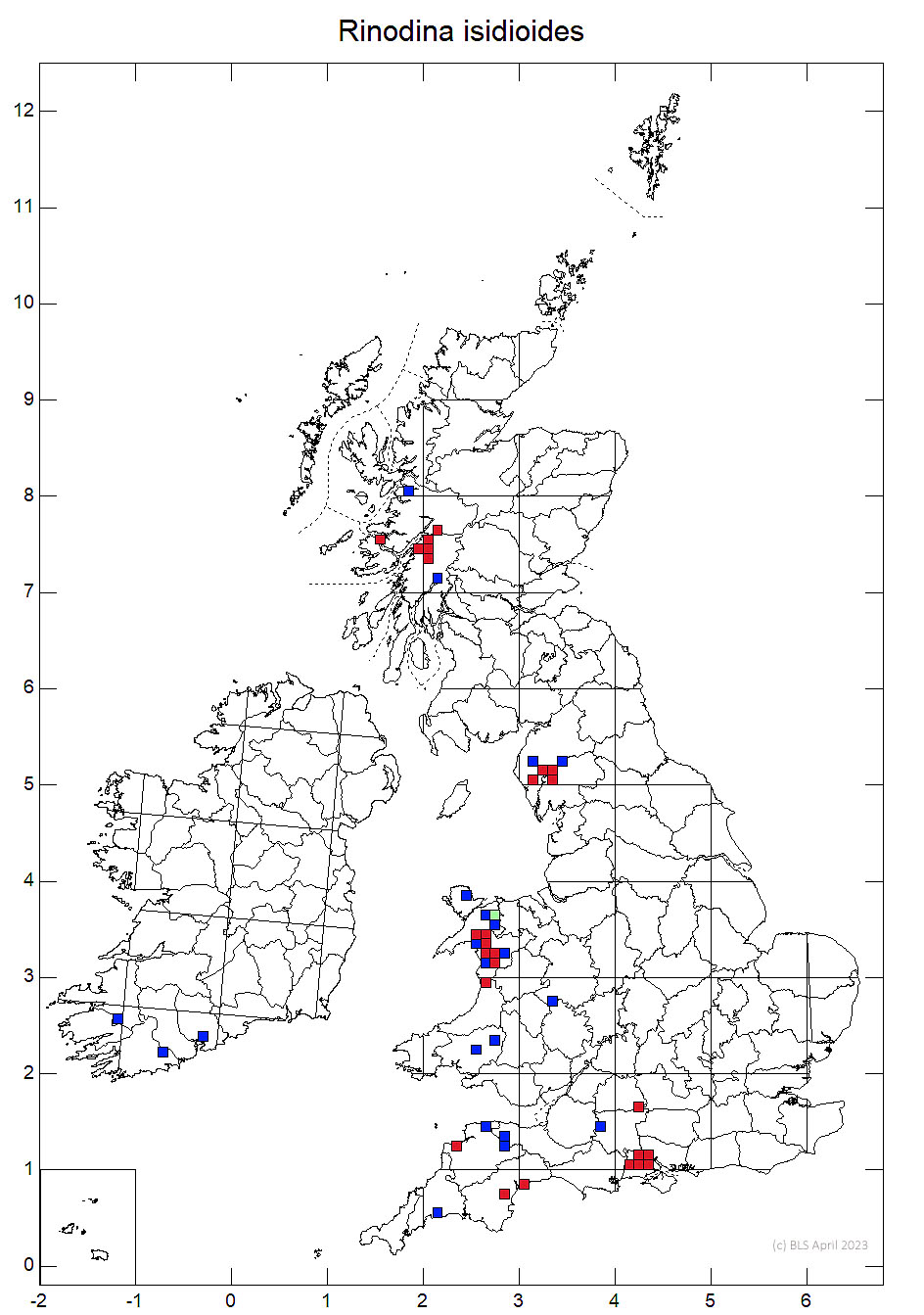Rinodina isidioides
An attractive small lichen dominated by coralloid-branched cylindrical isidia, often radiating in rosettes. Found on well lit base enriched bark on older Oaks in open oceanic woodlands. Rather similar to Agonimia octospora, but this is green when wet or dry and forms imbricate mats not rosettes, while Rinodina isidioides is pale slivery-grey when dry and only green when wet. Often sterile but unmistakable when it is fertile, with typical Rinodina apothecia sitting among the isidia, typically appearing rather disconnected from the isidiate thallus.
Thallus effuse, composed of numerous minute coralloid-branched and thin ± cylindrical isidia. Isidia pale grey, green when wet, sometimes appressed or like folded squamules. Apothecia 0.9–1.15 mm diam., sessile, frequent, sometimes contiguous; thalline margin 0.1–0.15 mm thick, concolorous with the thallus, entire or crenulate, persistent; disc black, persistently flat; epithecium red-brown; hymenium 130–160 μm high; hypothecium 30–50 μm tall; paraphyses 1–2.5 μm diam., apices 4–5.5 μm diam. Asci 75–110 × 22–35 μm. Ascospores 21–31.5 × 11.5–17 μm, Pachysporaria-type (Fig 1). Thallus K+ yellow, K/UV (dry)+ bright yellow (atranorin).
When sterile distinguished from Agonimia octospora by the pale grey colour when dry (A. octospora remains green when dry), the easily visible K+ yellow reaction on the isidia (A. octospora can show a fleeting K+ yellow effusion under the microscope and is K/UV (dry)–), which are larger, more cylindrical and pointed and have a firm, even cortex without microscopic, peg-like extensions.
On at least somewhat base riched bark, or more rarely amongst mosses overgrowing bark, on older Oak, usually in well lit situations in ancient woodlands. There are some records from Ash in the Lake Distict. Can grow in the same woods as similar looking Agonimia octospora but is more light demanding and is found in better lit situations.

Rare S. England, S.W. & N. Wales, W. Scotland (Argyll) and possibly also S.W. Ireland, but there are only old records here that may be errors for Agonimia octospora. The rarity of this species in the south west of England is surprising (and some old records here may also be errors for Agonimia octospora), but it has very localised but strong populations in the New Forest, N. Wales and Argyll.
A very localised southern Atlantic – humid Mediterranean lichen. It has a very patchy distribution and is absent or very rare from some areas where it would be expected, as in many suitable sites in south west England. It can, however, be very locally frequent in areas where it occurs. There was some confusion with Agonimia octospora in early records and conformation is required for some old records, including all Irish records. As this lichen is strongly light demanding, it is especially threatened by increasing shade in open woodlands due to the cessation or reduction in grazing pressures. Ash Dieback may a threat at some sites.
Britain: Near Threatened & International Responsibility species.
Scotland: Priority Taxon for Biodiversity in Scotland.
Wales: Near Threatened & Section 7 species.
England: Section 41 species.
Cannon, P., Thüs, H., Aptroot, A., Coppins, B., Orange, A., Sanderson, N. & Simkin, J. (2022). Caliciales: Physciaceae, including the genera Anaptychia, Heterodermia, Hyperphyscia, Mischoblastia, Phaeophyscia, Physcia, Physciella, Physconia, Rinodina and Tornabea. Revisions of British and Irish Lichens 23: 1–37.
Text by N. A. Sanderson, base on Cannnon et al (2022)
